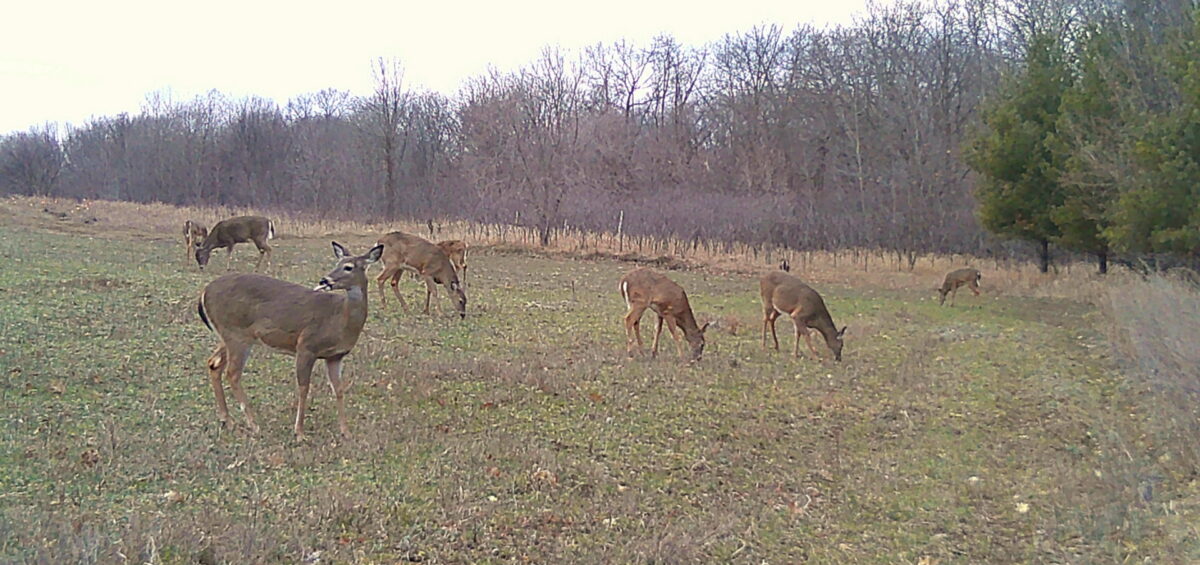I will never forget March of 2023. Why am I thinking about winter in the middle of summer, you ask? Because as long as I live, I will never be able to erase the image of a starving herd of deer, down to skin and bones, browsing in a clear-cut that I had just finished. I hope I never have to see that again, and there’s something I can be doing right now to help keep that from becoming reality.
Over the last few years, I’ve become fascinated with a land manager’s ability to influence the composition of the deer herd through trigger finger management and nutrition. Though food plots certainly have a place in this, I’m generally more interested in what type of nutrition can be created for the deer herd through habitat manipulation rather than with agriculture.
Over the last few years, I’ve become fascinated with a land manager’s ability to influence the composition of the deer herd through trigger finger management and nutrition.
That said, there is one place where food plots leap above Mother Nature in terms of value to deer, and that’s in late fall and, more importantly, very early spring. Simply put, the native vegetation that evolved in Minnesota and across the Upper Midwest is not meant to grow from November to April. This is where our cool season food plot species shine.
Most specifically, especially in dry years, I’m looking to cereal grains to be my workhorse and help carry the deer herd strongly through fall and be that nutritional lifeline they desperately need when the snow melts. Though winter wheat is a great option, I’m usually a bit more partial to cereal rye, as it can grow just about anywhere and will continue to grow even as temperatures start approaching freezing.
My favorite place to utilize cereal grains the past few years has been broadcasting them into standing corn and beans, usually around a rate of 75–100 lbs./acre. Though they appear sparse at first, once the corn or bean leaves start to die back, a solid rainfall and some warm, sunny September days are all it takes for rye to get moving. By the time we start to see actual cold weather in November, the rye will often look similar to grass in your lawn. Not terribly tall, but dense beneath the corn stalks.

Cereal rye can do surprisingly well when broadcast into standing corn.
This can be a nice little sweetener for the deer during November and December when they’re coming to corn or beans as a destination food source. Rye packs a serious protein punch, coming in around 20–25% crude protein prior to maturity. This can be a critical nutrient for the deer herd trying to pack on as much fat as physically possible before winter descends.
Very few things are packing much protein come November, and though deer are mostly interested in high-fat foods, solid levels of protein will allow them to store that fat more efficiently, maintain better muscle mass, and be a solid bedrock for them to build on in spring.
This is where cereal rye changes the whole game. Most folks aren’t thinking deer in early April, but when I sit over a field of rye while turkey hunting and see a dozen deer or more flocking to that green grass, there’s something to it. Remember, rye will break dormancy as soon as temperatures get above freezing, and it’s the first green thing to emerge as a result.
That boost of protein is absolutely critical for deer coming out of winter with nothing but browse to eat. It allows does to finish their pregnancy in good health, gives them a jump on milk production, and gives bucks a big jolt of antler-building material.

This grainy phone image was taken on an early December muzzleloader hunt, where I caught this nice 3.5-year-old buck munching on rye.
While this benefit is great in any given year, the benefits stack up within the herd over time. Healthy deer reproduce and give birth to healthier deer, which are in turn more likely to keep producing stronger and healthier deer. Think of it as a long-term process, where the benefits stack up with each generation of whitetail.
Though my sample size is small to date, I have seen improvements in the local deer herd, with yearling bucks typically having larger racks than they did 30 years ago, and both bucks and does having higher body weights and improved body fat condition when I examine them after being harvested.
Give rye a try this year, and I think you’ll be glad you did. It’s cheap, it grows easily, and late August into early September is the perfect time to interseed rye into your corn and beans. It’s one of the easiest possible activities to ensure solid deer nutrition when it matters the most.

